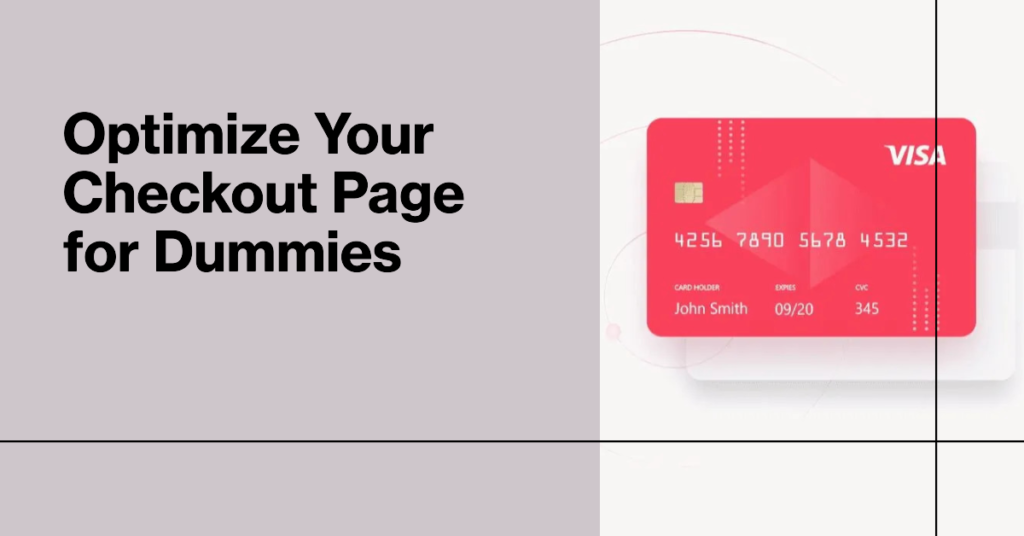A seamless online shopping experience plays a vital role in satisfying customers. From browsing products to checkout, each step matters. Among these, Checkout Page optimization stands out as a crucial component. It’s where customers finalize their purchases, making it a pivotal point in their journey. Also, by simplifying the checkout process, businesses can reduce cart abandonment rates and enhance user satisfaction. Offering various payment options, ensuring security, and maintaining a user-friendly layout are essential. Thus, optimize your Page not only facilitates smooth transactions but also contributes significantly to a positive shopping experience, ultimately fostering customer loyalty and trust.
What is a Checkout Page?

The final step of buying online is the checkout page where customers enter payment and shipping details. Additionally, this step is crucial for turning website visitors into paying customers and affects their shopping experience.
The checkout process varies from a simple one-page form to a multi-step procedure, depending on the design. Also, components like landing pages, sales funnels, and product pages are usually linked with the checkout page.
What Is Checkout Page Optimization?
Optimizing the page means focusing on details to simplify the purchasing process for customers.
This involves streamlining the checkout process to avoid distractions like pop-ups and unnecessary redirects. Additionally, understanding why customers abandon their shopping carts is the first step toward creating a more user-friendly checkout design.
Common reasons include unexpected fees, complex checkout processes, mandatory account creation, lack of trust in security, and insufficient product information.
Knowing these issues, you can then implement solutions to optimize your page for a better user experience.
Tips for Optimizing Your Checkout Page
Checkout on just one page
Optimizing the checkout page involves fitting the most appealing designs onto one screen, reducing the chance of losing distracted or impatient customers. Additionally, a streamlined, one-page checkout process is highly feasible and preferred for website optimization.
Focus on gathering essential data like payment details, delivery preferences, and contact information, keeping the page concise and user-friendly. Also, avoid clutter by removing unnecessary elements from the checkout page design, ensuring a smoother customer experience.
Offer a range of payment options
In optimizing your page, offering various payment options is crucial. Customers often abandon their carts due to payment difficulties, so catering to different preferences—like card payments, PayPal, or Apple Pay—can prevent this.
For recurring payments, bank debit is preferred, but credit card usage varies by demographic. If customers don’t find their preferred payment method at checkout, they’re likely to shop elsewhere.
You can better meet customer needs and enhance page optimization by including diverse payment options and services like QuadPay and Klarna.
Build security features into the design
When optimizing your checkout page, prioritize security by displaying trust logos and SSL certificates. Also, these assure customers of their payment safety. Effective checkout pages balance security with user-friendly layouts and minimalistic designs.
Remember to align checkout images and descriptions, prominently display security seals, and eliminate unnecessary elements like tabs or banners. Include a concise return policy explanation and regularly conduct A/B testing for further refinement.
Continuous customer feedback helps fine-tune the payment process and enhance conversion rates, making ongoing maintenance essential for optimal checkout page performance.

Conclusion
To sum up, improving the checkout page is essential to improving the entire online buying experience.
Additionally, by simplifying the procedure, providing a variety of payment methods, and emphasizing security, companies can drastically lower cart abandonment rates and raise consumer satisfaction. A checkout page that is optimized not only makes transactions go more smoothly, but it also encourages consumer loyalty and trust.
Lastly, it is essential to turn visitors into paying customers and influence how they view the business. Therefore, for businesses hoping to succeed in the cutthroat online economy, devoting time and resources to checkout page optimization is crucial.








